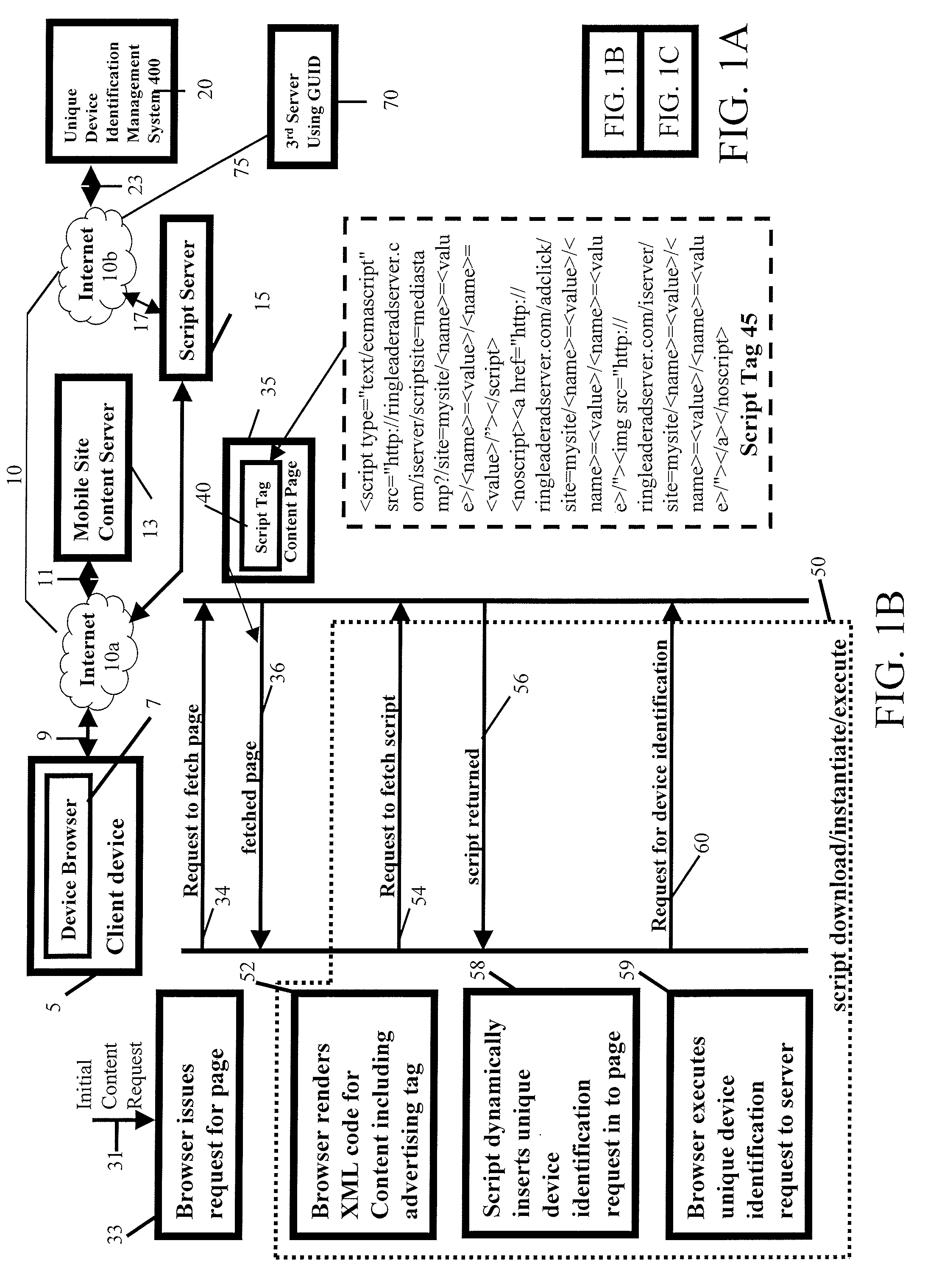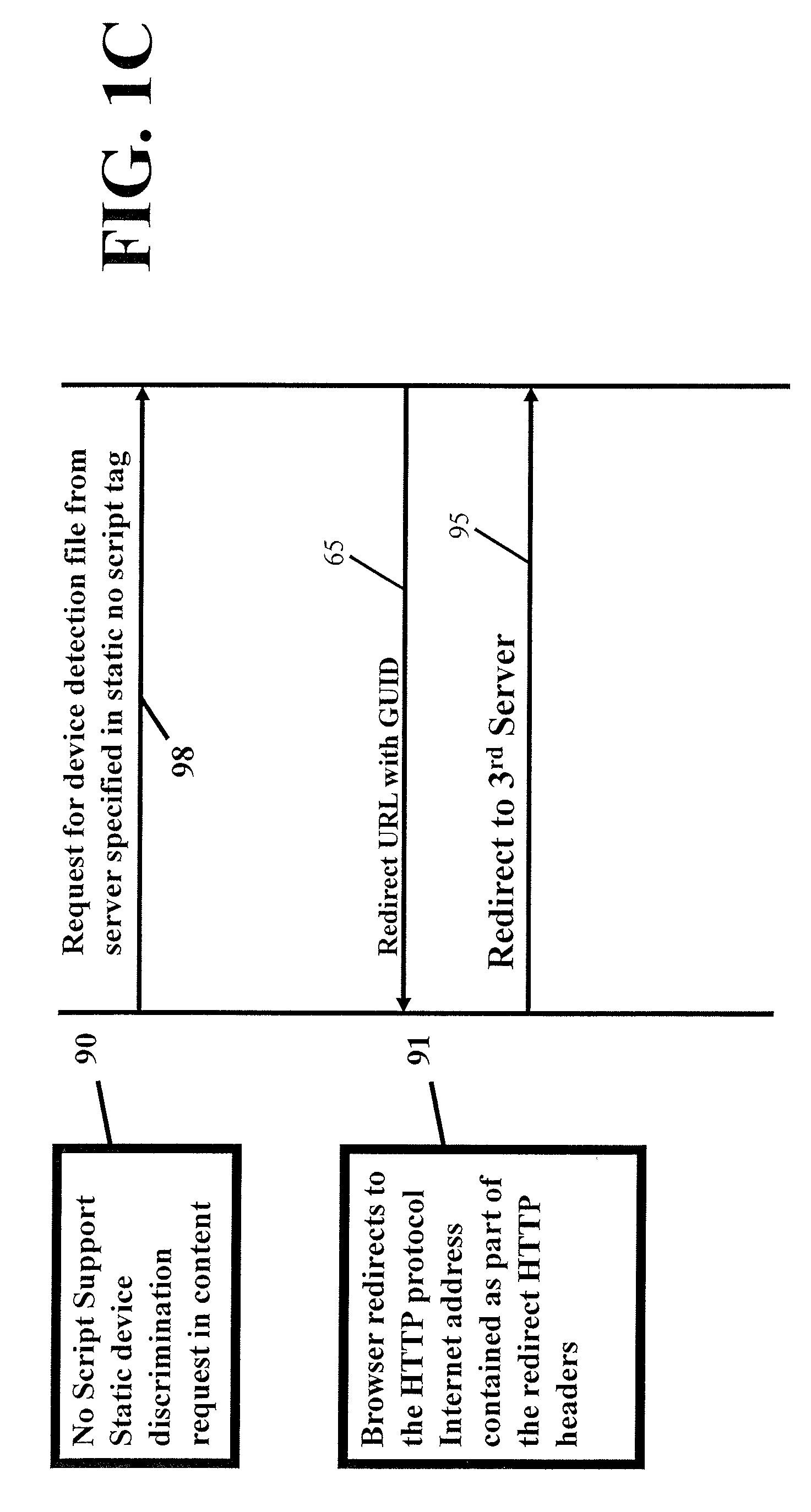User-transparent system for uniquely identifying network-distributed devices without explicitly provided device or user identifying information
a network-distributed device, user-transparent technology, applied in the direction of instruments, digital computers, computing, etc., can solve the problems of minimal cpu processing and memory facilities, explosive growth of internet usage, and slow content retrieval
- Summary
- Abstract
- Description
- Claims
- Application Information
AI Technical Summary
Benefits of technology
Problems solved by technology
Method used
Image
Examples
example 1
GUID Passed to External System in Redirect from Mobile Device Browser as Part of “?GUID=6723591” Query String Shown Above
[0070]http: / / eyeblaster.com / GUID=6723591 /
example 2
GUID Passed to External System from Mobile Device Browser as Part of “?GUID=6723591”0 Redirect URL Path Address
[0071]As those skilled in the art will appreciate, an agency dashboard audit system is a buy side tool. Examples of which are DART, Eyeblaster, and Microsoft Atlas Media Console. Advertisers use those tools to manage online advertising campaigns that can cut across digital channels. They usually serve the creative and track the advertisers campaign across multiple sites. The tools provided these companies are often called dashboards and allow advertisers and themselves to monitor how campaigns are progressing in terms of number of unique users consuming the advertising when they visit a sites content, impressions delivered in total and by site as well as click throughs by users, ROI, etc. Thus the focus of an agency dashboard audit system is on the advertiser, not the publisher, and provides a real time reporting and metrics dashboard to monitor how advertising campaigns fo...
PUM
 Login to View More
Login to View More Abstract
Description
Claims
Application Information
 Login to View More
Login to View More - R&D
- Intellectual Property
- Life Sciences
- Materials
- Tech Scout
- Unparalleled Data Quality
- Higher Quality Content
- 60% Fewer Hallucinations
Browse by: Latest US Patents, China's latest patents, Technical Efficacy Thesaurus, Application Domain, Technology Topic, Popular Technical Reports.
© 2025 PatSnap. All rights reserved.Legal|Privacy policy|Modern Slavery Act Transparency Statement|Sitemap|About US| Contact US: help@patsnap.com



